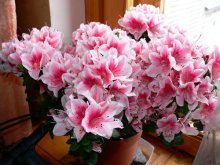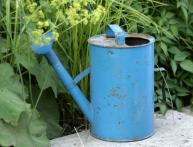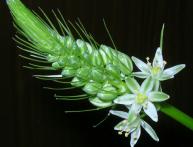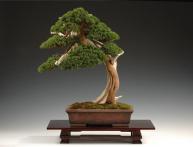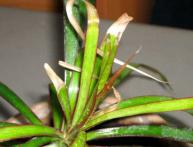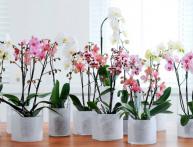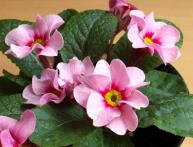Indoor rhododendron - features of cultivation and care

Indoor rhododendron is known to gardeners under another name - azalea. And many flower growers, I think, have already managed to appreciate in practice the rather obstinate nature of this flower when grown indoors. I was no exception: I once bought a luxurious, huge indoor azalea bush and tried to create a comfortable environment for it at home, but, alas, the plant quickly died.
Content:
- What is azalea
- Rules for caring for rhododendron
- Watering the plant is an important point of care
- Pests and diseases of azaleas
- How to propagate rhododendron
Therefore, if you want to have a capricious beauty on the windowsill azalea, it is worth clearly assessing your capabilities, time, and the presence of the necessary conditions so that the plant does not live for just a week, but continues to delight you with flowering.
What is azalea
Rhododendron indoor usually grows in the form of a small bush that has round, glossy, dense leaves and blooms with large flowers of a wide variety of colors. The color of azalea flowers varies from snow-white to bright red.
Most often, in indoor conditions, the height of a rhododendron bush does not exceed 30-50 centimeters, but if the plant is grown as a standard tree, its height can reach more than a meter.
The flowering period of azaleas falls mainly in February-March, sometimes in May. The plant should bloom annually, which is achieved with suitable azalea care.
According to the structure and shape, azalea flowers can be:
- simple;
- terry;
- a flower within a flower, with a total number of double petals of more than 30;
- a flower within a flower, but with simple petals.
Such a variety of shapes, colors, and textures of petals will always allow you to find the flower that would satisfy the taste of any gardener.
It is the rich blooms that attract people when they see an azalea in a flower shop. And, looking at this flower, admiring its splendor, people buy azalea for themselves or as a luxurious gift, not knowing that they brought a very capricious and whimsical plant into their home.
Rules for caring for rhododendron
In nature, this plant lives in fairly cool conditions. It is this fact that significantly influences the impossibility of its normal growth in room conditions. Many of us do not have a room at home where it would be cool enough to please azaleas.
Therefore, the main cause of flower death is most often high air temperature and dry air.
Besides, the soil Not just any azalea will do, but one with high acidity, which is not so common among indoor plants. Therefore, in the store, purchase specialized soil for growing azaleas with an acidity pH of 4 to 4.5. It is necessary to make it loose, containing coniferous components, sand and peat.
Every two to three weeks the plant needs mineral supplements, and at the time of bud formation and at the beginning of flowering, it is recommended to fertilize the azalea with a superphosphate solution.
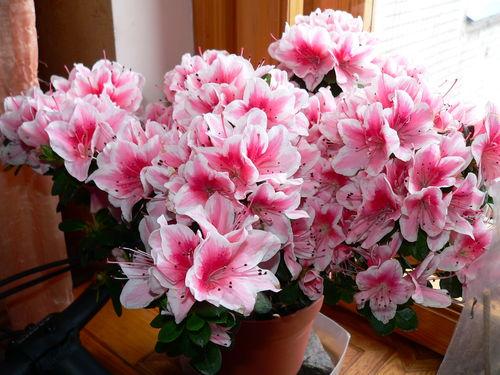
As mentioned above, heat practically equates to the death of the plant. The optimal temperature for rhododendron growth is +10-15 degrees.So think about it: can you provide such low temperatures in an apartment?
In summer, this becomes even more difficult; azaleas need frequent spraying, but you must not get the spray bottle on the flowers of the plant themselves, as this spoils the appearance.
Watering the plant is an important point of care
Watering is also not so simple. It is necessary to increase their frequency if the ambient temperature rises, and ensure that the soil is always moist.
Azalea prefers soft water, so you always need a supply of settled, but not bloomed, clean water.
It is better to place the pot with the plant on a base of small pebbles poured into a tray. There must always be water in the pan so that the plant receives enough moisture from its evaporation.
Pests and diseases of azaleas
If the difficulties described above have not yet discouraged you from having an azalea at home, you should know that the capricious nature of the plant is also manifested in its resistance to diseases and pests of indoor plants.
Indoor rhododendron is affected very quickly at elevated air temperatures. spider mite, which can eat your plant quickly and irrevocably.
Quite often, spots can be seen on azalea leaves, the appearance of which indicates a fungal disease.
How to propagate rhododendron
If you managed to find an approach to an azalea, and you want to get new plants from the mother plant, then you can try to propagate the plant using cuttings.
Although here the azalea shows its complex character: rooting its cuttings is a difficult process, most often ending in failure.

